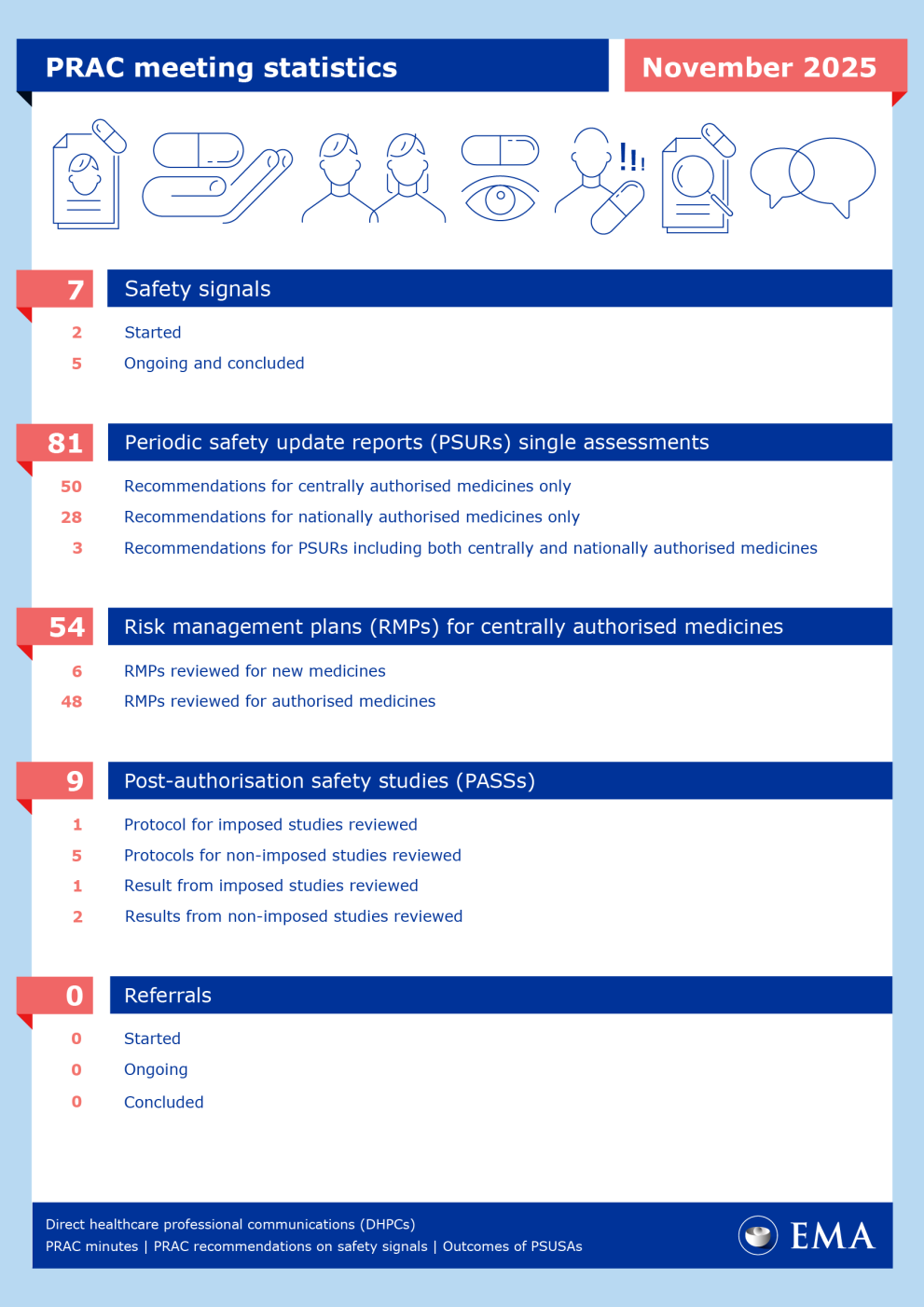
Meeting highlights from the Pharmacovigilance Risk Assessment Committee (PRAC) 27 - 30 October 2025
PRAC agrees on a communication to healthcare professionals on injectable tranexamic acid medicines
NewsHumanPharmacovigilance
Injectable tranexamic acid: serious adverse reactions when inadvertently given intrathecally
PRAC agreed on a direct healthcare professional communication (DHPC) to remind healthcare professionals that extreme caution should be taken when handling and giving injectable tranexamic acid to ensure it is only given intravenously (into a vein). It must not be given intrathecally (into the fluid-filled space between the thin layers that cover the brain and spinal cord), epidurally (into the space between the wall of the spinal canal and the covering of the spinal cord), intraventricularly (into a fluid-filled cavity in the brain) or intracerebrally (into the brain).
Tranexamic acid, which blocks the breakdown of blood clots, is used in adults and children from 1 year of age to prevent and treat bleeding.
PRAC reviewed cases of medication errors, including reports from across the EU, where injectable tranexamic acid was mistakenly given either intrathecally or epidurally due to mix-ups with other medicines, mostly local anaesthetics. Intrathecal use resulted in serious side effects, including severe pain in the back, buttock and legs, seizures and cardiac arrhythmias (abnormal or irregular heartbeat), and in some cases death.
Healthcare professionals should take measures to prevent potential mix-ups between injectable tranexamic acid and other injectable medicines, especially those given intrathecally, that may be used during the same procedure, such as local anaesthetics.
To reduce the risk of medication errors, syringes containing tranexamic acid should be clearly labelled for intravenous use only. It is also advised to store injectable tranexamic acid separately from local anaesthetics.
The product information of injectable tranexamic acid medicines, including the outer packaging, will be updated to strengthen the warnings that these medicines must only be given intravenously.
The DHPC for injectable tranexamic acid will be forwarded to the Coordination Group for Mutual Recognition and Decentralised Procedures – Human (CMDh). When adopted, the DHPC will be disseminated to healthcare professionals by the marketing authorisation holder, according to an agreed communication plan, and published on the Direct healthcare professional communications page and in national registers in EU Member States.

| Procedure |
| Levamisole-containing medicinal products |